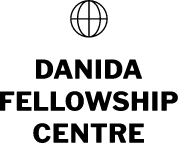Seaweed Biorefinery in Ghana – SeaBioGha
Info
Start date: 1 January, 2015 End date: 31 January, 2020 Project type: Research projects in countries with extended development cooperation (earlier Window 1) Project code: 14-01DTU Countries: Ghana Thematic areas: Aquatic environment and resources, Energy, Lead institution: Technical University of Denmark (DTU), Denmark Partner institutions: Kwame Nkrumah University of Science and Technology (KNUST), Ghana Council for Scientific and Industrial Research (CSIR), Ghana Project coordinator: Anne S. Meyer Total grant: 9,986,201 DKK Project files:Project summary
The project will establish cultivation of seaweed along Ghana’s 540 km of coastline and establishing relevant technology, develop local know-how and new business opportunities for seaweed cultivation (i.e. farming) and processing of seaweed products in Ghana. The project will develop selective enzymatic technologies to extract valuable hydrocolloids, carrageenan, alginate, and fucoidan from seaweed. The technology is fit for local, smallscale enterprise and green growth in Ghana. The seaweed processing residues will be exploited for production of bioenergy, including bioelectricity by microbial fuel cells (resting on experiences developed in an ongoing DFC project among the partners). Sustainability aspects will be carefully considered to establish green processes. The project focus is:
1. Development of offshore seaweed farming in Ghana;
2. Development of local enzyme production and bio-catalytic extraction; technologies for sustainable extraction of target hydrocolloids;
3. Sustainability assessment;
4. Local training and entrepreneurship development for seaweed farming and seaweed processing business opportunities in Ghana.
Outputs
Project completion report:
Different types (defined species) of red and brown types of Ghanaian seaweeds have been found to hold highly functional and hence valuable hydrocolloids with reological properties on par or better than the equivalent commercial carrageenan and alginate. Ghanaian Hypnea musciformis seaweeds is a source of commercial carrageenan. Hydropuntia seaweed contains agar. Ghanaian Sargassum sp. contain alginate, and Padina seaweed from Ghana have high-gelling alginates. Cultivation of seaweeds in Ghana is preferable to wild type collection to control quality. Different types of green seaweeds respond differently to enzymatic conversion due their structure. Enzymatic saccharification and cellulose levels vary. Microstructural changes of green seaweeds Chaetomorpha linum, Ulva fasciata and Caulerpa taxifoliawere were studied to understand the physical changes occurring in the seaweeds during saccarification. C. linum had highest glucan content (20%), compared to 16% in U. fasciata and 6% in C. taxifolia indicating large differences in composition. Glucose yields obtained after 24 hr of enzymatic saccharification were 59, 38 and 60% for C. taxifolia, U. fasciata, C. linum, respectively, based on the glucan content. Pre-autoclaving increased the saccharification yields. Enzymatic saccharification resulted in cell wall degradation and release of the chlorophyll content in C.linum, delamination of sheets in U. fasciata and surface erosion of leaves in C. taxifolia. C. taxifolia deviated in being very rich in beta-1,3 linked xylan (46%) that may be valuable as a prebiotic.
The project research led to new realization of the cell wall architecture and ultrastructure of cellulose crystallites in green seaweeds (Chlorophyta). We used X-ray diffraction and transmission electron microscopy in combination with systematic chemical analyses during cellulose purification of three different green seaweed species obtained from Ghana including Chaetomorpha, Caulerpa, and Ulva species and found that Chaetomorpha linum cellulose crystallites are unusually large. Unexpectedly, this green seaweed species therefore appears particularly promising as a source for producing novel cellulose-based materials, e.g. high value specialized paper (artisan paper production in the coastal areas in Ghana) or new cellulose-based composite materials, e.g. plastic substitute materials.
Study completed on: Environmental Location Assessment for Seaweed Cultivation in Ghana published).
Abundacy of seaweeds in Ghana; The major dry season showed the highest growth of seaweeds mostly all locations examined. this is likely due to high concentrations of nutrients during the dry season. Tema New Town and Old Ningo recorded the highest species richness and diversity of seaweeds.
Relevant sites for sustainable cultivation of seaweeds identified by scientific assessment along the coast of Ghana. Nursery and pilot cultivation of seaweeds established at CSIR in Accra, Ghana.
Brief popularized abstract
The project aimed at establishing relevant technology, develop local awareness, know-how and new sustainable business opportunities for seaweed cultivation and processing of seaweed products in Ghana. The idea to establish seaweed cultivation is due to Ghana’s 540 km long coastline. The project succesfully targeted selection of local hydrocolloids-rich red and brown types of seaweed species for cultivation. he project focused on development of technologies to extract hydrocolloids such as carrageenan and alginate, and fucoidan from seaweed.The project also focused on bioenergy and bioelectricity prodcution from green seaweeds and found that green seaweeds (of which there are plenty in the coastal areas in Ghana) contain highly crystalline cellulose that could be useful for artisan paper production and/or use in novel material composites e.g bioplastics. The utilization of seaweeds can lead to sustainable processes and products for local value creation. Sustainability aspects have been key throughout. The project targeted establishing a new green economy option in Ghana by use of marine resources, enhancing coastal villagers’ livelihoods, encourage youths and women’s participation, and create business opportunities in Ghana.
The website is a project website at DTU Bioengineering (Project site closed when project ceased 31.12.2019)
Go back to all projects
